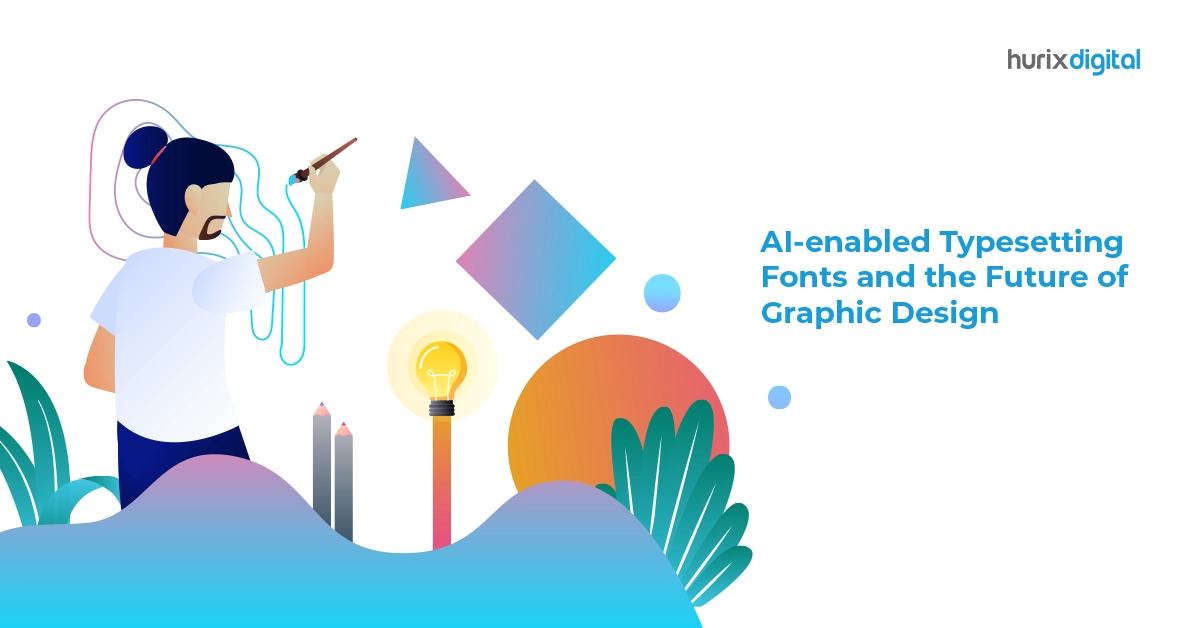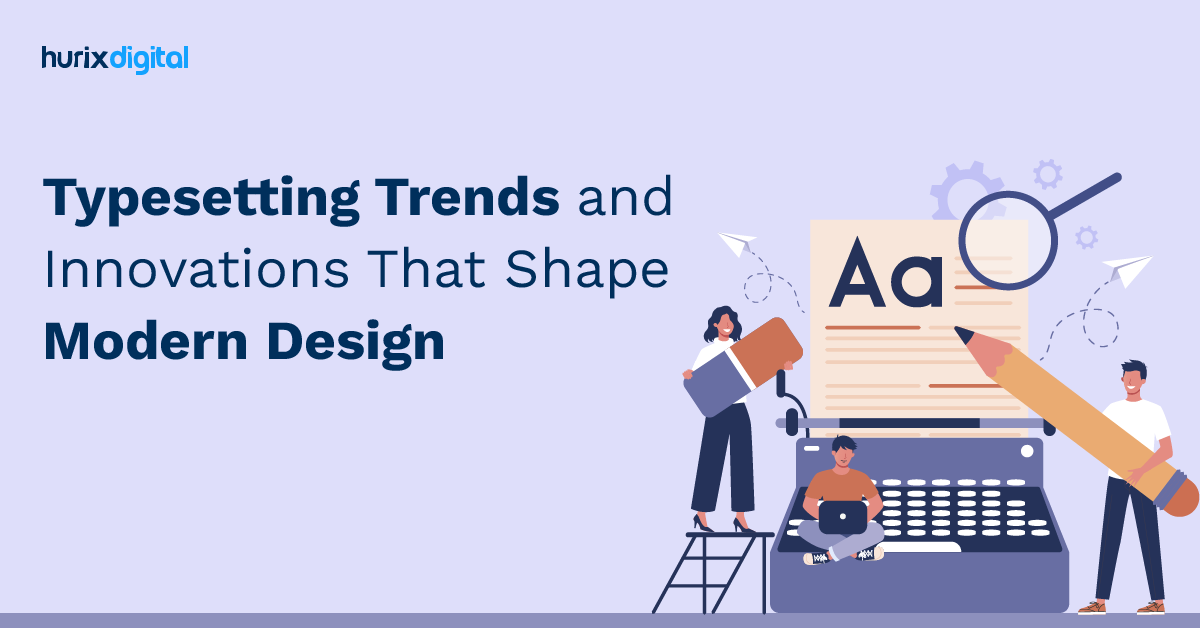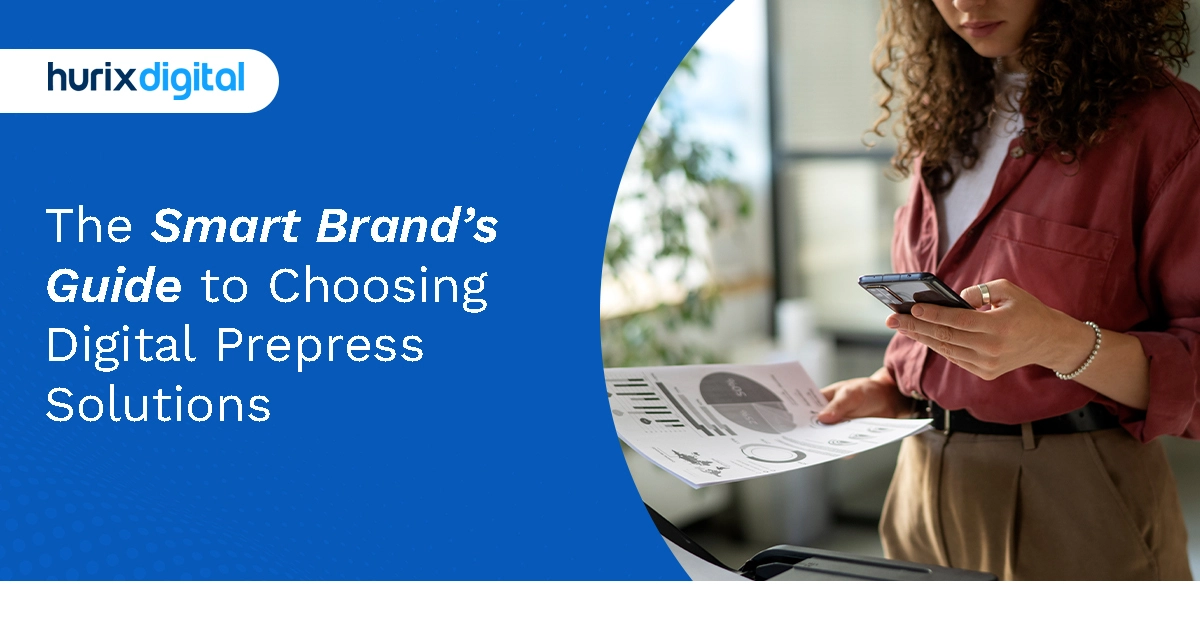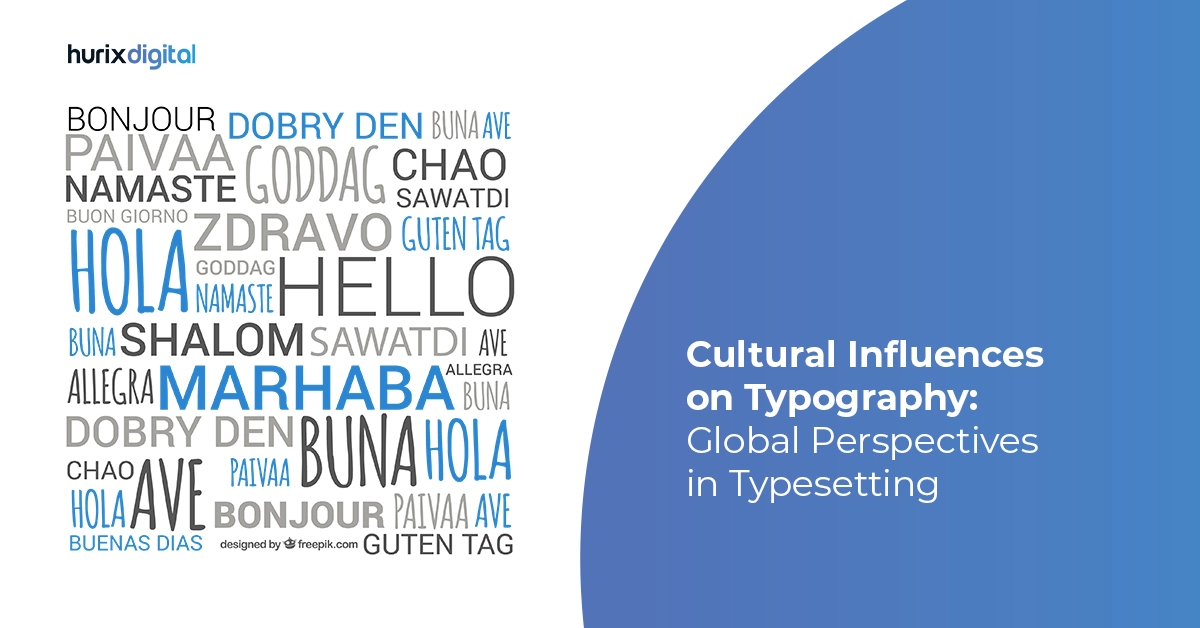
AI-enabled Typesetting Fonts and the Future of Graphic Design
Typography is an essential element for any graphic design to be effective and meaningful. In easy terms, typography is the art of arranging texts and letters so that the reader can easily read, understand, and find the content visually appealing.
It includes font style, structure, and appearance, all intended to convey a specific message and elicit certain emotions in readers while grabbing their attention.
AI and machine learning now have an infiltrating presence in many industries, and the design world is no exception. AI in graphic design is now changing the typography landscape, opening up a new horizon of possibilities for graphic designers.
We’ll examine the impact of AI typography in reshaping the future of graphic design, but first, let’s understand the importance of typography in graphic design.
Table of Contents:
- Understanding the Power of Typography in Graphic Design
- Artificial Intelligence (AI) in Typography: A Game Changer
- What are the Challenges and Ethical Considerations of Typography in Graphic Designing?
- Summing Up
Understanding the Power of Typography in Graphic Designing
A vast majority of websites and designs are occupied by content, making careful use of typography a necessity. After all, typography is an art that manages the presentation of content.
Remember that text-based content is key to bringing visitors and keeping them engaged with a site. Let’s take a look at a few key reasons typography is crucial to graphic designers:
1. Grabbing Viewer’s Attention
The attention span of people is shrinking.
Brands now only have a few seconds to grab the attention of their target audience. This is where designers try to harness the power of typography to catch the audience’s eye immediately.
Since typefaces come in a variety of shapes, sizes, and styles, these elements are crucial for creating unique designs, and integration of AI and graphic design can only benefit designers in this case.
2. Reader-Friendly Content
Careful typography ensures web text is easily readable by visitors. A poor font choice can confuse viewers, making the presentation difficult to follow.
Research shows that small font sizes and low contrast are the number one complaint for web users as it relates to reading online. Furthermore, all readers, especially low-vision readers, experience better reading speeds when line spacing is 2.5.
So, well-chosen typography enhances readability, making the content more engaging and accessible.
3. Establishing Hierarchy
An experienced designer strategically uses different font sizes and types to draw the audience’s attention to the most important information first. This is achieved through the use of different font sizes for headings, subheadings, and body.
4. Building Brand Recognition
In graphic design, the fonts are the visuals that target customers or visitors keep in memory for a long time. They’re vital for building brand recognition, as seen in the recognizable typography-based logos of Coca-Cola, Google, GAP, and Disney.
This is where AI typography design can play a key role for small brands in creating iconic visuals.
5. Giving Value and Tone to Your Content
Typography conveys a design’s values and tones. Different typefaces represent different moods and effects in design.
For instance, Sans-serif fonts provide a modern, clean, easy-to-read look to the content, while serifs offer a conventional, more old-fashioned touch.
6. Creating Harmony
Graphic designers also use typography for visual harmony, giving their content a sense of visual order, continuity, and coherence.
A designer may use the same font for similar content so that viewers may instantly recognize it.
7. Making a Visual Impact
Typography is also an important element to build an impression on viewers or users. Its glaring example is the use of large fonts by designers to either convey their content’s purpose or create stunning artwork.
For this reason, websites have large headers that often resemble book covers. The use of AI graphic design tools has further enhanced the impact of typography in modern web design.
Also Read: The Future of Typesetting: Predictions and Trends in Automation
Artificial Intelligence (AI) in Typography: A Game Changer
Typography has not been exempt from the growing integration of AI into graphic design. With that said, here are some ways AI typography is making waves in the world of fonts:
1. Custom Font Generation
AI font generators now allow designers to create and fine-tune custom fonts easily. They can effortlessly adjust everything from letterforms to spacing and styles to match the specific needs of a project or brand.
Beyond custom fonts, AI typography art generators are also enabling designers to create artistic and experimental typography compositions that blur the lines between text and visual art.
2. Font Pairing Recommendations
Certain AI tools for graphic design that use AI typography can now accurately suggest font pairings that work well together. Designers input a primary font, and the tool recommends complementary secondary fonts, streamlining the font pairing process.
3. Predictive Text Layout
Popular graphic design software now employs AI typography for predictive text layout as well. They can automatically adjust text and image placement, ensuring text flows seamlessly around images and design elements.
4. Content Optimization
Innovation knows no bounds. AI font generator tools are now able to analyze the content of a design and suggest font styles that enhance its readability and legibility. It helps designers make informed font choices based on the content’s context and target audience.
As a result, designers can now save more time and effort in searching for the perfect fonts for a project.
What are the Challenges and Ethical Considerations of Typography in Graphic Designing?
The many benefits of AI in graphic design come at some cost. Here are some of the challenges and ethical concerns of the use of AI in typography that designers need to be mindful of:
1. Overreliance on AI
One challenge designers face is the temptation to over-rely on AI in typography.
Although AI is a useful tool, relying too much on it runs the risk of limiting original thought and producing a design that follows a formula. Designers should maintain a balance between leveraging AI’s capabilities and nurturing their creative instincts.
2. Copyright and Plagiarism
The use of AI font generators necessitates vigilance concerning copyright and intellectual property rights.
Designers need to ensure that any fonts created or modified with AI tools respect these legal and ethical boundaries. Plagiarism is a significant concern, and designers must take care to build upon existing fonts rather than replicate them outright.
3. Ethical Font Choices
In AI typography design, font choices carry ethical weight, especially in culturally and socially sensitive contexts. Typography carries meaning, and the wrong choice can convey unintended messages or offend sensibilities.
Therefore, designers must be culturally sensitive and select fonts that align with the intended tone and message while respecting local customs and norms. AI typography technology is a remarkable development, but its use comes with a few challenges.
Designers must navigate these challenges and ethical concerns thoughtfully to create an innovative, responsible, and impactful AI visual design.
Also Read: Exploring The Future of AI in Typesetting Services
Summing Up
AI can help graphic designers choose the right typefaces for their projects quickly and efficiently. However, it’s important to realize that AI in graphic design should only be used as a tool, and designer should ultimately decide on typeface/font based on their experience and artistic vision.
Remember, whenever you choose a typeface, take factors such as the design’s purpose, target audience, and branding into careful consideration. Graphic designers will now be able to experiment and push boundaries even further, thanks to this synergy of AI and human creativity.
If you are someone looking to transform your designs, Hurix Digital is geared to support you in meeting all of your needs. Our creative team, equipped with cutting-edge technology, develops interactive storyboards, animations, and designs to help your creative vision soar high.
Get in touch with us today!

Vice President – Content Transformation at HurixDigital, based in Chennai. With nearly 20 years in digital content, he leads large-scale transformation and accessibility initiatives. A frequent presenter (e.g., London Book Fair 2025), Gokulnath drives AI-powered publishing solutions and inclusive content strategies for global clients








